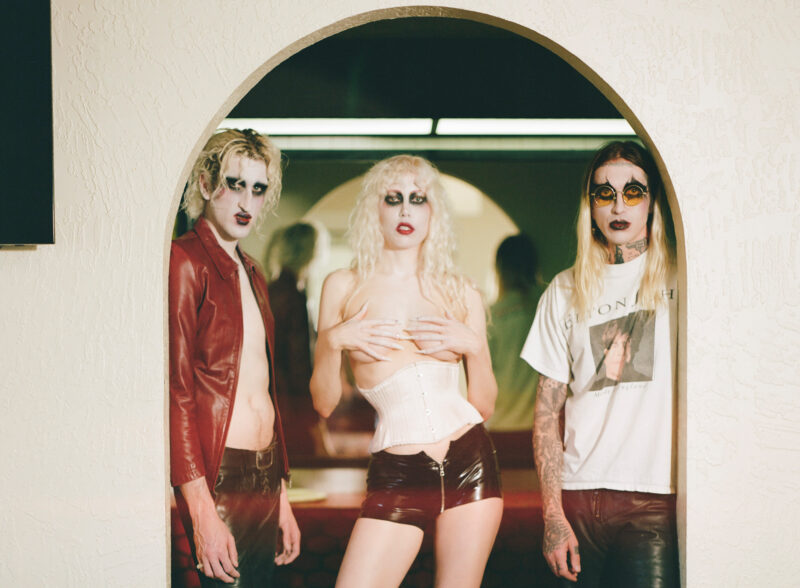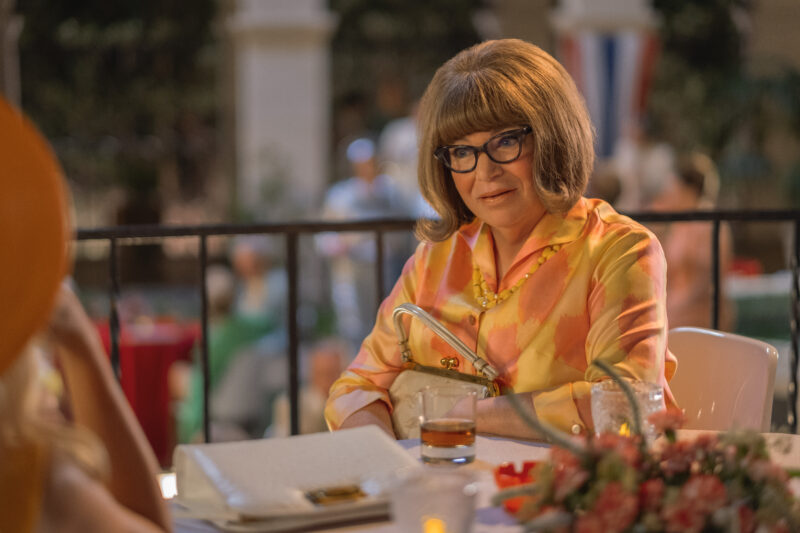In the wake of the ‘war on porn’ and the adult verification laws sprouting everywhere in the world, we can’t help but challenge censors and legislators: will they rewrite history? By legislating porn out of existence, can they also deny the role it has had –and it has– in shaping our culture(s)? Here’s an excerpt from the introduction to Vietato ai Minori, a book Norcen published in 1999. Much has changed since. Not what’s at stake.
In Towards a Sociology of the Cinema, I.C. Jarvie posits that most American films are a gold mine of information and observations on the societies they describe. So are Ozu’s movies on Japan’s middle classes, or Satyaiit Ray’s on Bengala.
Watch any porn movie and you’ll find a repertoire of sexual practices (…) Watch a porn movie from the 70s and you’ll find the same practices, however differently choreographed and lensed. In this difference we see the evolution of both the language of cinema and of sexual mores. The forms of desire changed, the koinè changed: bearded hippies in the 70s, Californian clones in the 80s. Behind the wild sex of the 70s and the aseptic (protected) sex of the late 90s, we discern an epochal turning point (…)
Gay pornography as history. As legacy. As self-portraiture. As a reservoir of fantasies, norms and needs. It is the mirror that questions us and reveals us to ourselves: why the obsession with the heterosexual male, for instance? Why the lack of love stories? What do they tell us?
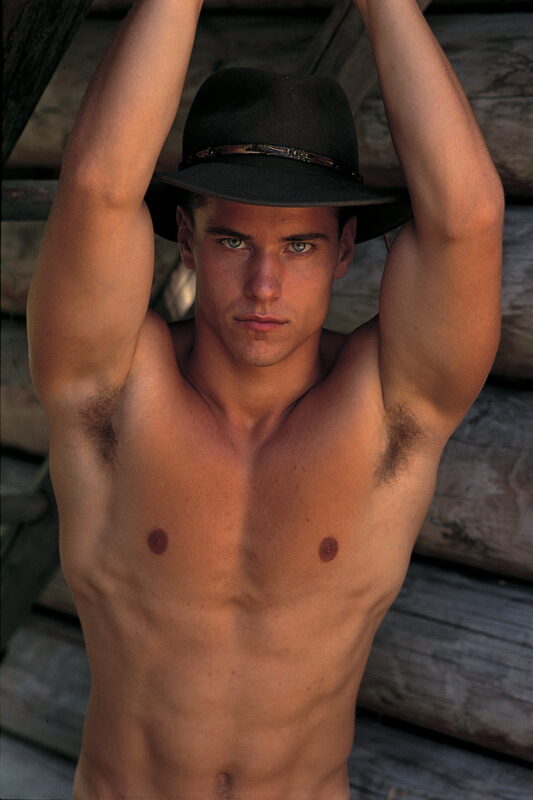
Lukas Ridgeston
Anthropology of porn
“In any narrative form,” writes director and playwright Tadashi Suzuki, “stories seem necessary for every group to justify its existence.” Stories, myths, and rites that a heterosexual society has developed for heterosexual men and women. What about gay stories and myths though? While most mainstream media remained silent, porn told our stories: It showed us emotions, gestures, and desires that finally belonged to us.
“I saw for the first time,” says critic David Widmer, “what I needed to see. The triumph of what, until then, had populated only my mind. Images that gave flesh and bones to my fantasies. Crude images (…) and laughable dialogues. Beautiful nonetheless. I saw stunning men doing wondrous things. That day, in the darkness of the porn theater, the Church, which had done so much to redeem me, lost me forever. And I found salvation.” Sex, which in public discourse was sordid and ‘against nature,’ became wholesome at the movies.
In Bound and Gagged: Pornography and the Politics of Fantasy in America, Laura Kipnisc compares the polemical streak of a ‘lewd’ magazine like Hustler to Rabelais’ satires. But, unlike straight pornography, which can also erode societal taboos, gay pornography is always about transgression (and emancipation). For lack of outlets for our fantasies. “Think of the viewers in the countryside and in the villages,” says producer/director Gino Colbert. “They have no gay bars to go to, no friends, nothing. But porn videos give them an identity. They define their culture and their imagination.”
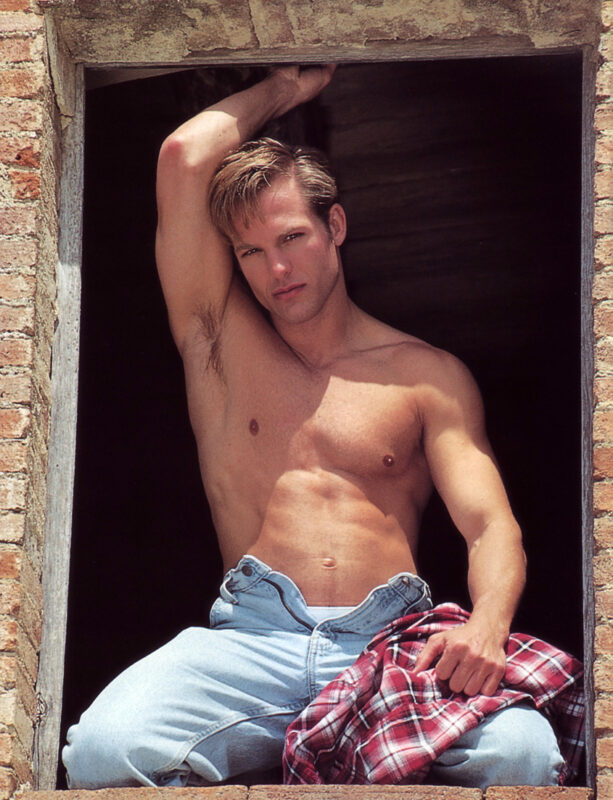
Derek Cameron
The dream factory
Showcase, mirror, catharsis. Porn delivers the grammar of sex and transforms it. It borrows from cinema, literature, sport, television, fashion, and it is plundered by all (see all Calvin Klein campaigns). It photographs our mating rituals and produces them.
To what extent has it contributed to accelerating (or slowing) the adoption of condoms? To what extent has it influenced words, gestures, and behaviors in the bedroom? Where does representation end and mythmaking begin?
On video, the world belongs to us. Sin does not exist, men are handsome and available, the heterosexual society that exiled us is nothing but a papier-mâché backdrop. By reflecting the images of desire, porn has helped shape our erotic lexicon and establish new types of beauty. It has developed new myths, new attitudes, and new paradigms; it has forged the pornstar. In this oxymoron, in this contrast between the glamour in ‘star’ and the shame in ‘porn,’ we find the bitterness of defeat and the desire for redemption. Where else are our stars?
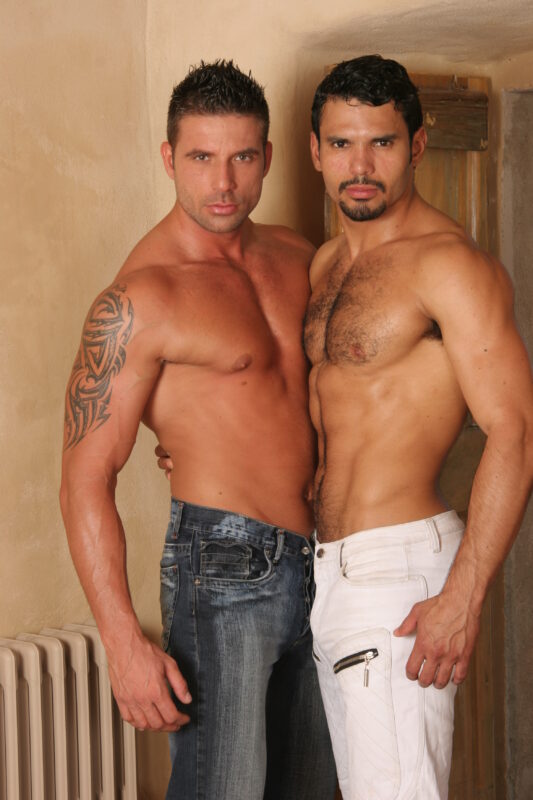
Julian Vincenzo and Jean Franko
What pornography?
I look up the etymology in the Rizzoli-Larousse encyclopedia: “porné (prostitute) and gràphein (writing). Obscene nature of writings or images.” And under “obscene:” “What openly offends decency (…) Repugnant, very ugly, very bad, something that offends the general taste or the aesthetic sense.”
A) That offends whose modesty? Because decency in San Francisco is not the same as in Riyadh. And because it evolves from generation to generation. Compare today’s television with the ‘50s; the chaste kisses back then with the kisses in Nine and a Half Weeks. Legislators have responded with the community standards and purely quantitative criteria (hard/soft): it’s deemed obscene what is not acceptable to the majority; a soft penis is erotic (thus artistic); an erect penis is pornographic—a few centimeters longer, a few centimeters wider. But the criteria are hypocritical and laughable, the community standards arbitrary, fleeting, and geographically elastic.
B) “That offends the aesthetic sense?” Shifting from ethical categories (“very bad”) to aesthetic categories (“very ugly”) seems even more gratuitous. True, 90% of porn is unremarkable, but we can’t argue that pornography is alien to beauty (pre-Christian civilizations tell us it’s not) or that a nude in Playgirl magazine, or a Bruce Weber nude or a Herb Ritts nude are necessarily more ‘artistic’ than a pornographic nude. We conclude, if anything, that sex threatens and challenges and unsettles still.
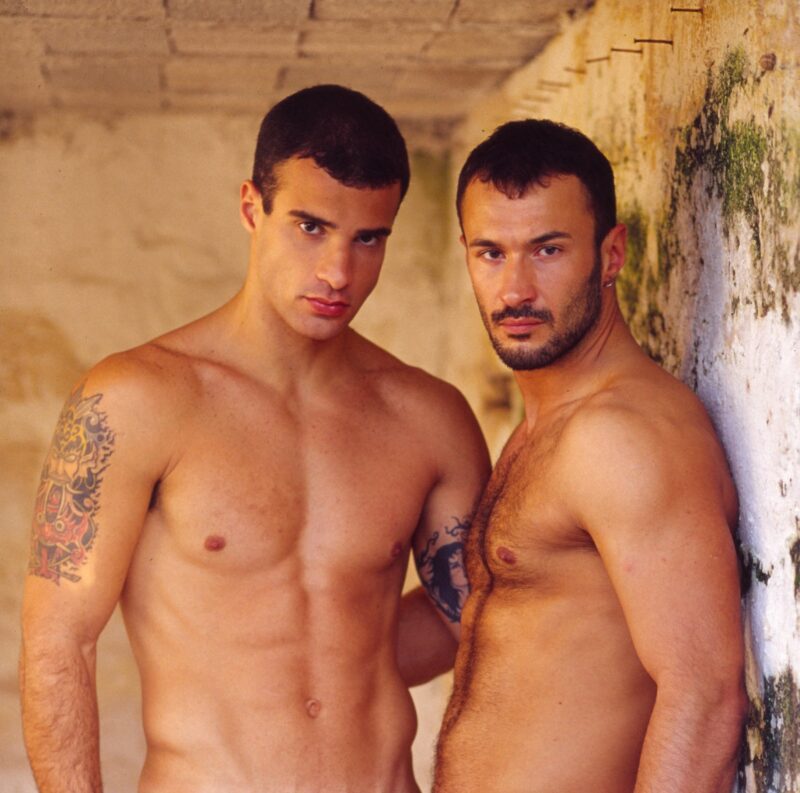
Leon and Wilfried Knight in ‘Decameron: Two Naughty Tales’
Let’s move to a semiotic analysis, beyond content, beyond ethics and aesthetics (useless). In porn movies, as in horror movies, the ability to provoke a reaction in the viewer prevails over the diegetic qualities (of the narrative and the mise en scène). An emotional reaction for horror movies (fear), a more immediately physical reaction in porn. But the Versace and Calvin Klein campaigns are designed—and work—the same way. “As a boy,” says director Michael Ninn, “I didn’t masturbate to Playboy. I preferred fashion magazines like Vogue.” And so? Are CK ads pornographic?
If the genre is “a socially recognized and legitimized model for organizing both content and form” (G. Bettetini), porn is no doubt the most codified (the most predictable) of film genres. It codifies the number of erotic scenes and ejaculations for each title; it codifies their sequence (oral, oral-anal, anal); it codifies both content and the arsenal of shots at its disposal. But, within the genre, there’s an infinite variety of scripts, fantasies and expressive forms…
*L. Norcen, Vietato ai Minori. Guida al Cinema Omoerotico, Forlì, Zoe Edizioni, 1999 (English translation by the Author from the original Italian)




